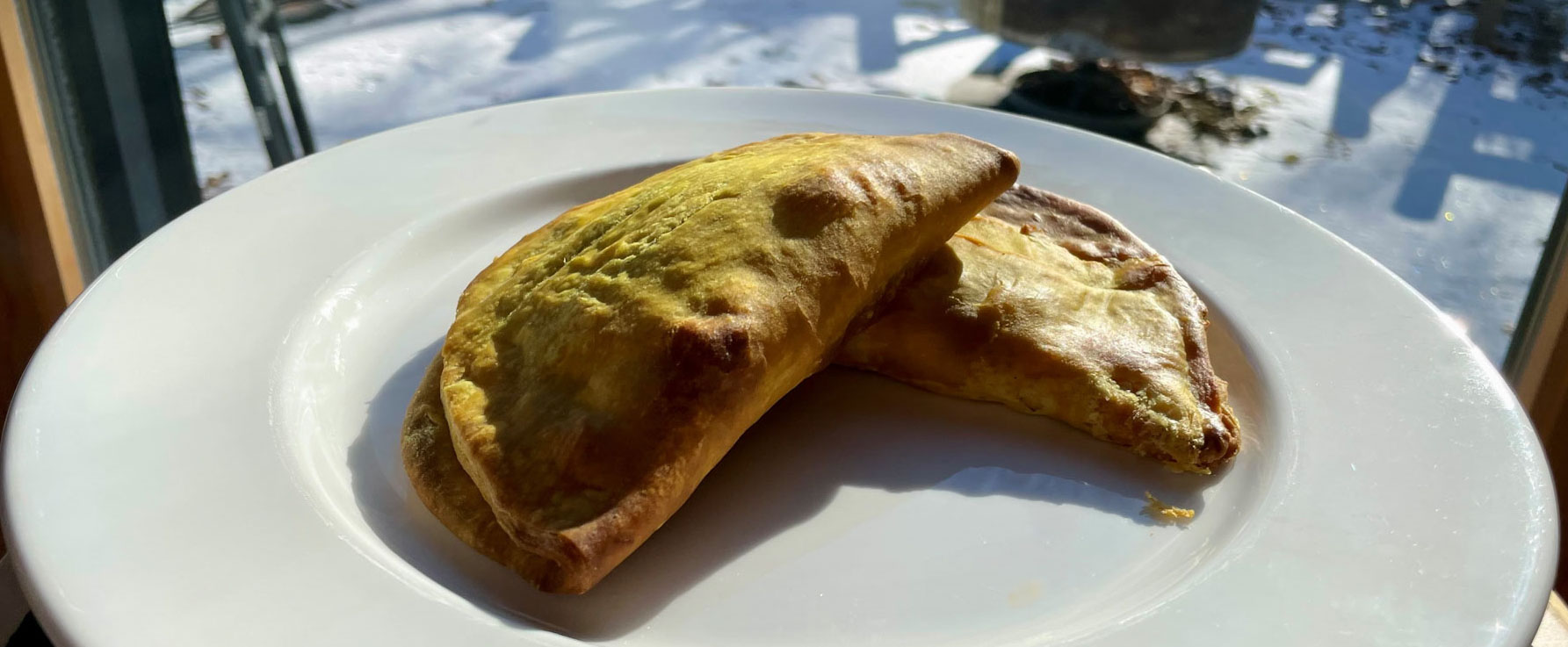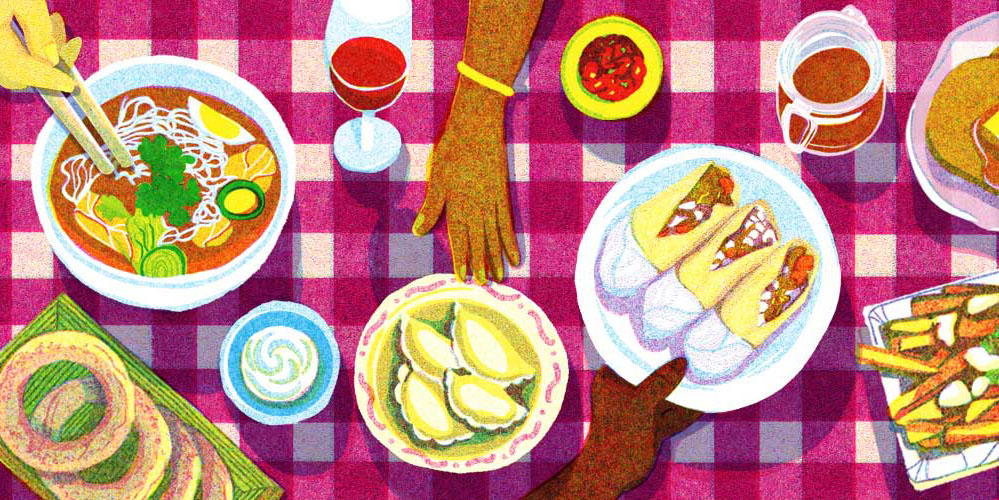
Are Jamaican Patties the most history-packed food in Canada?
Okay, okay, that question is probably impossible to answer. Lots of foods have fascinating and complex histories. But unpacking the patty reveals an evolution of the tasty snack over centuries of international migrations, both forced and free, and historical events, including a brief “war” fought on Canadian soil.
Let’s open up the patty and see what’s inside.
Colonization and Hand-Pies
Jamaica, home to the Indigenous Taíno people, was colonized first by the Spanish and later by the English. The Spanish brought with them the empanada, and the English brought the Cornish pasty - both types of hand pies usually filled with meat. These provided a departure point for the patty’s evolution. In fact, did you know the word patty has the same root as the word pasty (as well as pasta, pâté, and pastry)?
African Diaspora and Innovation
Both colonial powers enslaved Africans and their descendants as a source of labour on their plantations and in their households, including their kitchens. Cooks were tasked with recreating familiar foods from home for their enslavers. But enslaved workers, and their descendants, adapted and, many would say, improved these foods in several ways, incorporating local and imported ingredients.
Taíno Influence and Local Flavours
The Taíno originated in the Oronoco valley in present-day Venezuela, arriving in Jamaica between 600-900 AD. Among other things, they brought cayenne with them, which would become a common spice in Jamaican Patties. The very spicy scotch bonnet pepper - which is many times hotter than the jalapeño - is traditional to the Jamaican patty. Some think it originated in Jamaica, others say it came with the Taíno from the Oronoco Valley.
The Taíno called the island Xaymaca, the root of its current name. Although there is a persistent myth of Taíno extinction, increasingly, many Jamaicans celebrate their Taíno ancestry. (which you can read more about in this academic article from the journal “Caribbean Quilt”)
Indian Spice
India plays a big part in the evolution of the Jamaican patty.
Spices from India were exported to locations around the British Empire, including to the Caribbean. These spices became part of Jamaican cuisine. In fact, the distinctive yellow crust of the Jamaican patty comes from the use of turmeric, originally brought from India.
But it wasn’t just spices that travelled from India, it was people too. After Britain abolished slavery, plantation owners kept their labour costs low by bringing in indentured Indian sugar workers. These workers brought with them their own culinary traditions, including curry. (Curry has its own complicated international history, but we won’t get into that here.)
Chinese Jamaicans
The Chinese Jamaican population also has its roots with indentured labourers who had arrived beginning in the mid-1800s. In the 1960s and 70s, two major commercial franchises specializing in patties, Tastee and Juici Patties, were opened by Chinese Jamaican families. George Phang-Lyn, who had moved to Jamaica from China as a child, immigrated with his family to Canada in the 70s and opened George’s Tastee Foods (distinct from Jamaica-based Tastee). The family-owned bakery, restaurant and wholesaler is still selling patties out of two locations in the Greater Toronto Area.
Is this story whetting your appetite?
Then don’t miss our upcoming special exhibition eat make share: a taste of immigration, coming to the Museum this spring.
The Patty in Canada
There was limited immigration to Canada from the Caribbean prior to the 1960s due to racist laws designed to exclude Blacks and other people of colour. When the “points system” was introduced in 1967, it opened up immigration from the Caribbean. In Toronto, which became home to one of the most populous Jamaican communities, a number of individuals and families opened businesses to make and sell patties, including the Kensington Patty Palace in Toronto’s Kensington Market.
40th anniversary of the “Patty Wars”
In February 1985 a federal food inspector showed up at the Kensington Patty Palace with a notice that it and other establishments could no longer sell the item under the name “patty”. Under Canadian food regulations, a patty was what went between hamburger buns – there were defined proportions of meat, fat, and filler. The patties sold in the restaurant did not fit the definition. The inspector said they would have to change the name of the product or be fined.
Local journalists caught wind of the story. The result was pushback from the local community, who protested that customers buying patties were not at all confused and that the food was part of their cultural heritage. The controversy also spurred a surge in sales as awareness of the patty grew. In the end, a compromise was reached. “Jamaican” was added to the name of the product and on Feb 23, 1985, the Kensington Patty Palace celebrated with a Patty Festival. Since then, Feb 23 has become known in Toronto as Patty Day.


